The River, the Wall, and the Borderlands
A first-generation American’s search for answers along his country’s greatest divide.
On an unseasonably warm February afternoon, Austin Alvarado pushed his canoe into the winding waters of the Río Grande. Steadying the boat with his paddle as he had so many times before, the 25-year-old wilderness guide looked over his shoulder and locked eyes with a familiar face. His mother, weary from the six-hour drive down to the border from her home in Austin, Texas, smiled back at him. His father, sitting alongside his older brother, gave him a nod. They were ready.
The middle child of three boys — and the first American-born son of Jenny and Emehul Alvarado — Austin had often struggled to grasp the resolve his parents needed during their long, rigorous passage from Guatemala to Texas in the late 1980s. After persuading them to meet him outside of Brownsville in the Río Grande Valley, they sat just a few miles from the place where it all started nearly three decades before. Thick, muggy air surrounded the group as they carved their way through the meandering river, their tense silence filled by a rhythmic sloshing of water and the gentle strokes of their oars. But as they glided along, Austin found his mother’s eyes searching aimlessly along the banks, as if she didn’t know where they were. It all looked the same to her; she’d forgotten where she’d crossed the river illegally all those years ago. While this wasn’t the ceremonious return he’d expected, it spoke volumes about the depth of his parents’ journey and the larger immigrant experience in America.
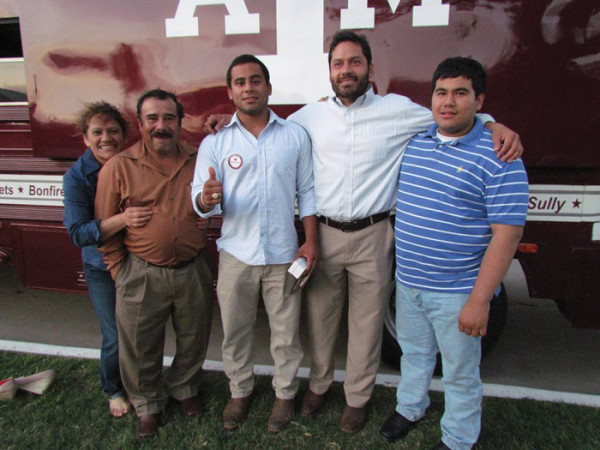
The Alvarado family at Austin’s Ring Dunk ceremony, a Texas A&M tradition. (L-R) Jenny, Emehul, Austin, Mynor, and Ronaldo.
“Arriving here isn’t this unforgettable moment where people celebrate that they’ve made it,” Alvarado reflected two weeks later. “The hard part isn’t getting to America: It’s living here, struggling, working tirelessly without a shred of safety or peace of mind. In reality, crossing the border’s just the beginning.”
******
To understand why Austin and his family were paddling along the Río Grande that day, you need to take a step back. As one of the five featured characters in The River and The Wall — a documentary exploring the impact a southern border wall would have on the borderlands’ vital wildlife migration routes, its most sensitive ecosystems, water accessibility along the river, and landowner property rights — he’d been traveling along the border for over two months, speaking with people from across the region and political spectrum. Now, with their filming all but completed and the adventure near its finish, he wanted to see where his family’s American dream started. Even more, he wanted to know where it was headed.
Like in many immigrant households, Austin’s parents didn’t talk about politics much. But when decorated nature filmmaker Ben Masters, known best as the free-wheeling cowboy conservationist featured in the 2015 Netflix documentary Unbranded, presented him with the chance to join in on the fight to protect critical wildlife hubs like Big Bend National Park and the Santa Ana Wildlife Refuge, the former Boy Scout listened. “I Iove the outdoors because it’s the great equalizer,” Austin said. “In nature, it doesn’t matter where you come from, what your status is, how much money you have — all that matters is you’re trying to get from point A to point B. That’s an underlying metaphor for what this country is all about.”
After deliberating for about a month — “I had to make peace with the fact that doing this would upset a ton of people, including some of my closest friends” — and consulting with this parents, Austin gave Masters a call. He was in. He soon learned he’d been joined on set by National Geographic filmmaker Filipe DeAndrade, host of Untamed with Filipe DeAndrade, Jay Kleberg, associate director for Texas Parks and Wildlife Foundation, and Heather Mackey, a bird and butterfly field biologist. Together, they committed to navigating the full 1,200 miles of Texas-Mexico border by way of horse, bike, and canoe. Along the way, they planned to set aside time to meet with farmers, ranchers, politicians (including Congressmen Will Hurd [R] and Henry Cuellar [D]), and anyone else who’d talk to them about the wall. Suddenly, Austin found himself at the center of the country’s fiercest political battleground.
******
Long before then-candidate Donald Trump led crowds in chants to “build the wall,” Jenny Alvarado left her husband, Emehul, and 2-year-old son, Mynor, in Guatemala City. Living in a country with few opportunities and surrounded by poverty, she saw America as her best chance to provide for her young family. But at 21 years old and facing a daunting 2,500-mile trek to the U.S. border, even she knew the odds were stacked against her. Nevertheless, she recruited the services of a smuggler with the goal of reaching her older brother and sister, who were both living in Austin. After nearly a month of grueling travel by bus, car, and on foot, she crossed the Río Grande in 1987. Three years and multiple border-crossing attempts later, Emehul and Mynor joined her.
For years, they worked long hours as undocumented immigrants — Jenny a house cleaner, Emehul a landscaper — while trying to assimilate to their new country. The work wasn’t easy and the pay wasn’t good, but they were close to Jenny’s family. More importantly, Mynor had access to a better school and a brighter future than he ever would have back in Guatemala. They soon welcomed their second son into the world, naming him after the city in which they’d found salvation: Austin. Still, the Alvarados were painfully aware of how fragile their position was and were determined to navigate a path to citizenship. Finally, they got it in 1996 when they were granted political asylum. Jenny soon became a naturalized U.S. citizen, while Emehul and Mynor became lawful permanent residents and were given their green cards. Suddenly, the fear and insecurity that had defined their American experience disappeared. Only 4 years old at the time, Austin was blissfully unaware of all this. “I didn’t realize my parents had come here illegally until I was 10 or 11,” he admitted. “It took me far longer to appreciate the determination and selflessness they possessed to make their dreams a reality.”
Like many first-generation Americans, Austin struggled to fit in with his peers. He felt different, out of place, an awareness that was compounded by his parents’ placing him in more affluent schools and Boy Scout programs outside of their local districts. They were trying to give him access to a better education and greater opportunities, but he didn’t see it that way. Instead, these experiences created a schism within him. Surrounded largely by white, wealthy peers, he was ashamed of his immigrant roots and lower economic status. He grew impatient with translating for his parents at restaurants and avoided bringing friends home from school. To cope with this insecurity, Austin dedicated himself to achieving personal success and turning the “lazy immigrant” stereotype on its head. Athletically, academically, extracurricularly, it didn’t matter: He was going to be the best and speak for himself before others could. He also made it a point to keep his two identities separate. He wasn’t a Guatemalan-American; he was an American at school and a Guatemalan at home. “I decided I needed to isolate my two worlds, abandon that feeling of ‘different’ and find my own identity,” he said. “Being a part of a different culture, my parents not knowing English, I wanted to pretend none of that was real when I was away from my family.”
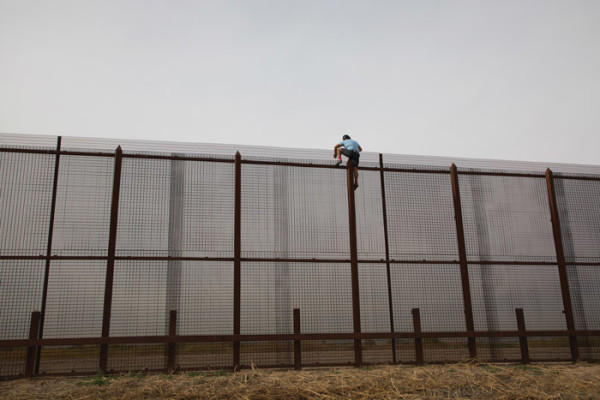
Austin climbs the current border barrier to show the impracticality of a wall. (Photo: The River and the Wall)
In 2014, Austin got his degree in Recreation, Parks, and Tourism Science from Texas A&M University before becoming the activities and river manager at Far Flung Outdoor Center, the leading outfitter in Big Bend. Over the next four years, he hiked hundreds of miles in places across the globe, completed a thousand-mile solo bike trip down the west coast, and paddled over 200 miles of the Río Grande in the Big Bend area. Each excursion exceeded the last in length, difficulty, and immensity, giving him perspective on the life his parents’ sacrifices afforded him — and a heightened appreciation for the fact that they sent all of their children to college while transitioning from minimum-wage workers to running their own landscaping, construction, and house-cleaning businesses. Enlightened by his adventures and inspired by his parents’ rise, Austin realized how wrong he’d been to cast judgment on them all those years ago. Now, he believes it’s his responsibility to uphold the sterling family legacy his parents have built in America. “If I fail, I give people who don’t want people like me or my parents in this country a chance to be right,” he said. “But it’s more than that: There’s nothing more American than wanting to persevere for your family and to be a part of a community. Stepping outside of yourself for the betterment of others is part of this country’s spirit.”
All of this ran through Austin’s head as he pedaled the first few miles out of El Paso and onto the trail eastward. This trip would be his most trying challenge yet — but with a platform to create true change on an issue so connected to his life, he couldn’t afford to fall short.
******
Austin knew that traveling over a thousand miles in basically two months over treacherous terrain would test his mettle. He was right. Each day was grueling: After waking up at sunrise and eating breakfast around the campfire, they’d pack up and, depending on their mode of transportation and destination, hit the trail for anywhere between seven to nine hours. After that, they’d set up camp, cook a quick meal, and head to sleep. It was as if they’d been sent back in time to the days of the Wild West. “We felt like cowboys on a cattle drive,” Austin laughed. “Every day was simple, but that’s made it so beautiful.”
The trip started off bumpy. Their initial leg (260 miles and 10 days by bike along the Río) consisted of backbreaking biking through sludgy riverside trails thickened by heavy December rains. There were several occasions when the film’s characters simply couldn’t push their wheels any farther, opting instead to carry their gear through the seemingly endless fields of soupy Texas mud. Austin assumed their presence would have attracted the attention of Border Patrol agents, but they were left surprisingly undisturbed. As the team moved farther east, they happily ditched their bikes to navigate the West Texas mountains on horseback.
The area’s rugged beauty and vibrant wildlife were on full display. The group looked on in awe as bighorn sheep scaled rock faces and violently butted heads, desperate to establish their dominance; they spotted hulking bobcats lying playfully on the ground, a sight rarely seen up-close; they watched as wild horses galloped through fields on the horizon and cows grazed in distant pastures. All of this, they agreed, would be irrecoverably disfigured if a wall is constructed. “The borderlands are home to some of America’s most sensitive and unique ecosystems. They’re also a vital passageway for migratory species like birds and butterflies,” Austin said. “I just wish people would get out here and see this place with their own eyes. They’d see it’s not a dangerous, desertified line in the sand between us and Mexico. It’s a national treasure.”
Capturing their trek was only part of the documentary’s objective. A large component — and indeed, the most challenging — involved conducting interviews with people throughout the region. Before they met with any of their subjects, who included prominent businessmen, cattlemen from storied Texas families, and elected officials, Masters reminded everyone of the mission at hand: Start a discourse and listen. Rather than creating a slanted, one-sided movie that filtered out points of contention and pro-wall sentiments, they sought out difficult conversations that incorporated people from across the political spectrum. Plenty of their interviewees believed in beefing up border security, but they found that most ranchers, farmers, and local residents thought a wall would do far more harm than good.
One of the main reasons behind this is tied into water accessibility, or lack thereof. With so few outlets to clean, fresh water in the region, both agricultural operations and animals in the area rely heavily on the Río Grande. Considering a wall would have to be built on the American side of the river, they could lose out on a major resource, people told Austin. “They made it clear: If we do this, we are walling off the only water resource in the desert and serving it up on a platter to Mexico,” he said. “There are already problems with water accessibility on both sides of the river, so blocking our citizens from reaching it is destructive to nobody but ourselves.”
The documentary’s most formative moments took place in the Río Grande Valley. Canoeing swiftly through the state’s southern tip, the team shifted their focus to speaking with people living in the heavily Hispanic region. As the home of several of the poorest counties in the U.S., the Valley is often portrayed as a desolate, perilous place, more of a warzone where the Mexican cartels run rampant than a part of America. But where Austin expected to find violence and anger, he was instead met with confusion and despondence. Valley residents didn’t fear for their lives or want their government to protect them — they felt forgotten, left behind by policies and news stories that cast their home as a place that needed to be controlled, not developed. Most were afraid a wall would cost them their homes and drive an even deeper wedge between the country and their communities.
The town of McAllen especially stuck with Austin. A couple days before he paddled out onto the Río Grande with his family, the film crew visited the city’s humanitarian respite center. Everyone there been caught crossing the border illegally. With nowhere to go and the Border Patrol’s holding cells at full capacity, these people were waiting for their trials in immigration court. After speaking with the center’s volunteers, Austin met a young Guatemalan woman who’d recently been captured. She was young — 20 years old — and had three children with her, including a 10-day-old. Austin immediately saw his mother in her. He lost it. “Mynor was 5 when he came over with my dad. That could have easily been him and my mom,” he explained. “I realized then and there just how much my parents had done for my family and how ignorant I’d been to it all. It shook me.”
“But when I saw my parents there at the end, standing with everybody else, I saw my two identities”.
******
It was around noon on Feb. 11. Exactly 71 days had passed since The River and The Wall had begun filming in El Paso and, to say the least, people were anxious. Canopies, tents, and cars lined the sandy entrance of Boca Chica Beach, most of which belonged to family members and friends of the cast. Warm ocean breezes pushed through the crowd, mussing their hair and knocking down the makeshift volleyball net they’d worked hard to set up. Although this spot didn’t offer a view of the crew’s final descent, they made a hell of an entrance a few minutes later. Sunburned and soaked from a celebratory group swim in the Gulf moments before, they stumbled out of Masters’ cluttered truck clinking beers and laughing in disbelief. They’d finally done it. In perfect synchrony, a mariachi band emerged from the road dressed in traditional black charro suits, playing vigorously as they walked over. The crowd exploded in laughter and excitement. Bearded and covered in sand, Austin looked around for a few moments before turning to Mynor, who’d driven down that morning.
“¿Y mamá? ¿Donde está?” And mom? Where is she?
“She’ll be here soon,” Mynor assured him.
A few minutes later, Jenny and Emehul arrived with their youngest son, Ronaldo, and a carful of snacks. Jenny beamed at Austin as she walked toward him, tears welling up in her eyes. Without saying a word, she embraced him, sobbing softly as they held one another. Horns and singing filled the air as the two smiled and reflected on how surreal the moment was. “I told him that I would have done all of it again — crossing the border, working my fingers to the bone — three times over if it meant my children would be happy,” she said later. “That moment, where our family is now, it’s all like a dream.”
As the celebration calmed and the mariachi band packed up, Austin stood away from the group and watched as waves crashed into the ocean. Although he’d been the least accomplished character selected for the film, he was the one most personally connected with its core issues. This had weighed on him throughout the trip, a burden that grew heavier with every passing oar stroke. But as he stood there meditating, he concluded this adventure hadn’t just restored his faith in his country: It had restored him as a person, too. “I’d always viewed my life in the wild as quintessentially American,” he said, taking a long gulp of his beer. “But when I saw my parents there at the end, standing with everybody else, I saw my two identities, which had been at odds for so long, come together as one. It sounds corny, but it’s true.”
Despite the personal growth he experienced and the positive strides they made while filming, Austin knows the path ahead will be difficult and uncertain. The River and The Wall won’t make its debut at film festivals for another year, meaning plenty could happen before the movie reaches viewers. After all, the U.S. has never been more politically divided than it is now, especially on the issue of immigration and the wall. In February, the Senate’s bipartisan “Common Sense Caucus” emerged with a proposal that, along with allotting $25 billion over the next decade to construct a southern border the wall, would grant legal status to 1.8 million “dreamers” — only to have the plan swiftly condemned by President Trump because, in his eyes, it wouldn’t curb legal and illegal immigration fast enough. About a month later, on March 23rd , Trump begrudgingly signed a federal spending bill into law that allocates $1.6 billion for border security funding, some of which can be used to bolster existing fencing. This figure is a far cry from what the president has long requested for the wall, but with a deal to protect DACA (Deferred Action for Childhood Arrivals) recipients still nonexistent, immigration advocates are in no mood to celebrate.
At the time of this article’s publication, there is no formal plan in place for the construction of a border wall. Regardless of how quickly lawmakers provide funding for it, one of the main questions remaining is how a potential wall will account for specific geographic features or water accessibility. Segments of the existing barrier, which were built as part of the Secure Fence Act of 2006 and make up roughly a third of the nearly 2,000-mile U.S.-Mexico border, are outfitted with gaps for landowners to pass through and reach water sources and exclusive property, something that many pro-wall advocates are quick to point out. But unlike in California and Arizona, where the majority of the current barrier stands, Texas’ entire southern border is comprised of water. In theory, gaps in the wall there would have to be far more frequent to allow people and animals to reach the river, which could undermine the structure’s core purpose as a viable deterrent for smugglers and traffickers. Another crucial difference between Texas and its neighboring states: Its borderlands are overwhelming privately owned, meaning the government would have to either purchase or seize almost every acre to build on through eminent domain. Considering these many complications, the wall’s unpopularity along the borderlands, and the fact that America’s 43 million immigrants (13.5% of its current population, according to the Migration Policy Institute) are key contributors to its strongest economy in years, Austin has faith that lawmakers will realize building a wall is a losing strategy.
“Whether it’s crossing a river or scaling a wall, getting over here will never be the hardest part for immigrants. Their greatest barriers will never be physical, no matter how tall you build them.”
The inside of the car was silent as they drove away from Boca Chica that night. Austin’s family was physically and emotionally exhausted from their long day of laughing, drinking, and dancing. As they neared the park’s exit, a Border Patrol checkpoint came into view. The vehicle slowed as it approached a group of officers, rolling down its windows so they could see each passenger’s face. “Is everyone in the car an American citizen?” an agent asked, his face shadowed under the brim of a forest green baseball cap.
“We are,” Austin replied.
“Alrighty, have a safe night,” he said after a brief pause, waving them on.
Austin nodded and rolled his window up, his mind already on the challenges awaiting him back west and far beyond.
REVUE magazine article by David Leffler.
More Information: theriverandthewall.com
David Leffler is a native of Austin, Texas. He has long had a passion for writing and travel.
Like his father, who was a historian and a writer, he believes storytelling is vital to highlighting the experiences of people around the world. His work primarily focuses on environmental, political, and social issues.
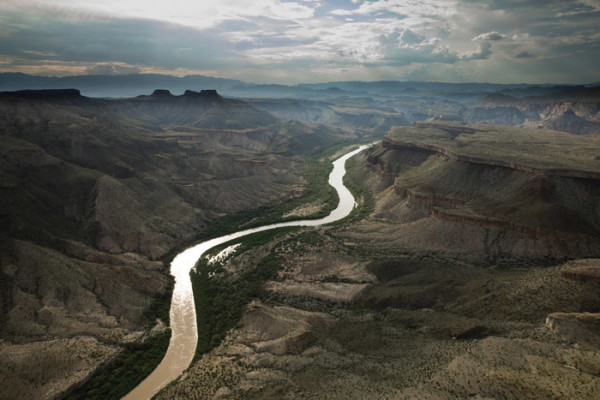
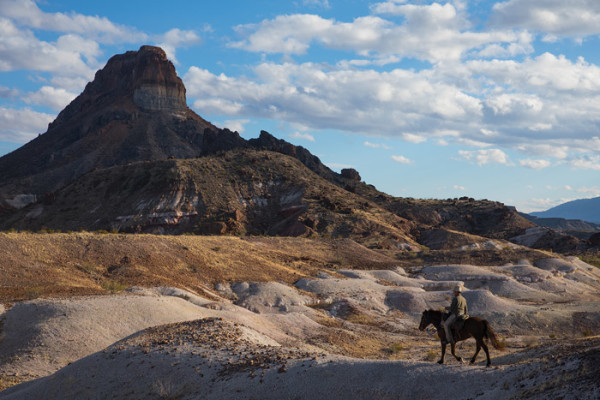
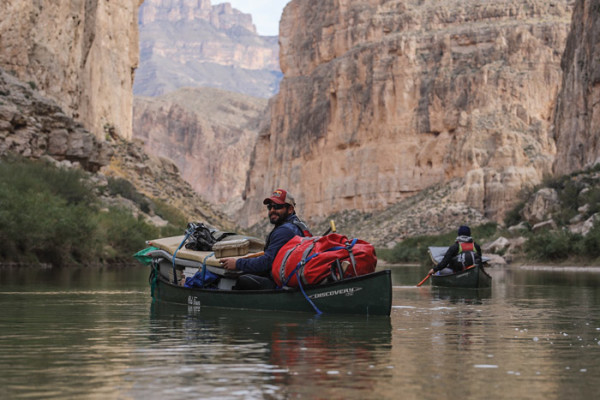
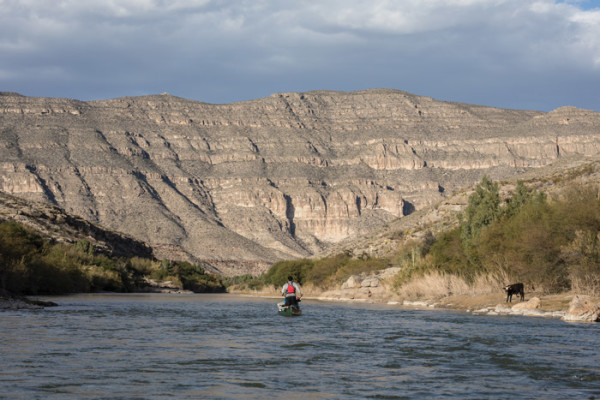
Could not, absolutely could not, be more timely. Thank you guys. You do lots more than you realize.
Beautiful story brilliantly told.
Thank you so much for your comments ~ when David Leffler reached out with this article we knew that it would be an honor to publish it. In fact, on final proofing, I left some tears on the pages.
I’m a little late on reading this but WOW! My job here in NC has been for the past 15 years or so to be the bridge between our public schools and the Hispanic population. I’ve heard the children’s stories and I’ve witnessed a mother’s anguish as her child sits in detention on the road back across the border and eventually to a home they may have never known.
¡Gracias!